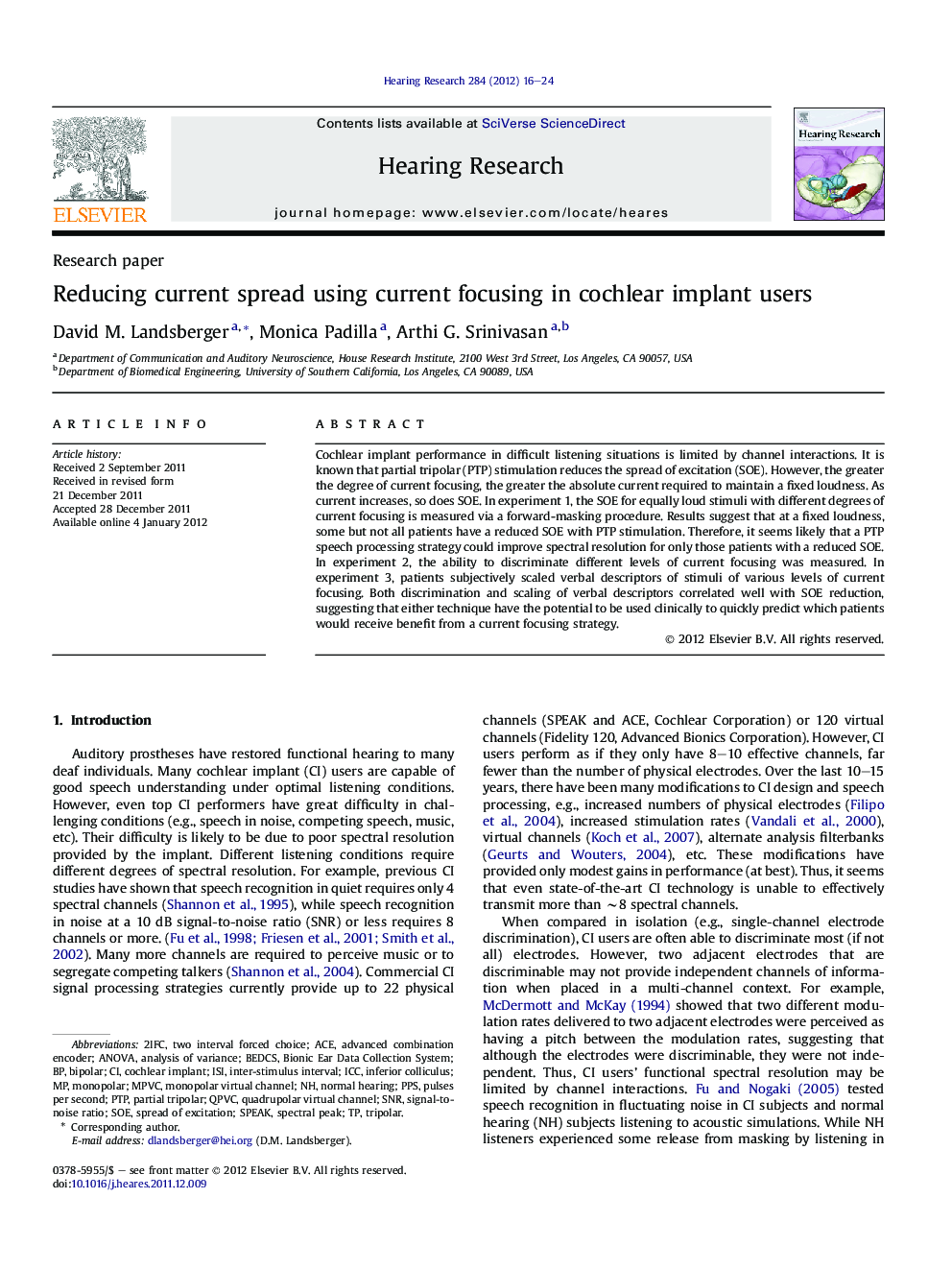| کد مقاله | کد نشریه | سال انتشار | مقاله انگلیسی | نسخه تمام متن |
|---|---|---|---|---|
| 4355408 | 1615616 | 2012 | 9 صفحه PDF | دانلود رایگان |

Cochlear implant performance in difficult listening situations is limited by channel interactions. It is known that partial tripolar (PTP) stimulation reduces the spread of excitation (SOE). However, the greater the degree of current focusing, the greater the absolute current required to maintain a fixed loudness. As current increases, so does SOE. In experiment 1, the SOE for equally loud stimuli with different degrees of current focusing is measured via a forward-masking procedure. Results suggest that at a fixed loudness, some but not all patients have a reduced SOE with PTP stimulation. Therefore, it seems likely that a PTP speech processing strategy could improve spectral resolution for only those patients with a reduced SOE. In experiment 2, the ability to discriminate different levels of current focusing was measured. In experiment 3, patients subjectively scaled verbal descriptors of stimuli of various levels of current focusing. Both discrimination and scaling of verbal descriptors correlated well with SOE reduction, suggesting that either technique have the potential to be used clinically to quickly predict which patients would receive benefit from a current focusing strategy.
► Spread of excitation was estimated for equally loud monopoles and tripoles.
► Half of the subjects had a reduced spread of excitation with tripolar stimulation.
► Half of the subjects had no difference in spread of excitation.
► Discrimination between levels of current focusing predict spread of excitation.
► Subjective scaling of current focusing predicts reduction in spread of excitation.
Journal: Hearing Research - Volume 284, Issues 1–2, February 2012, Pages 16–24